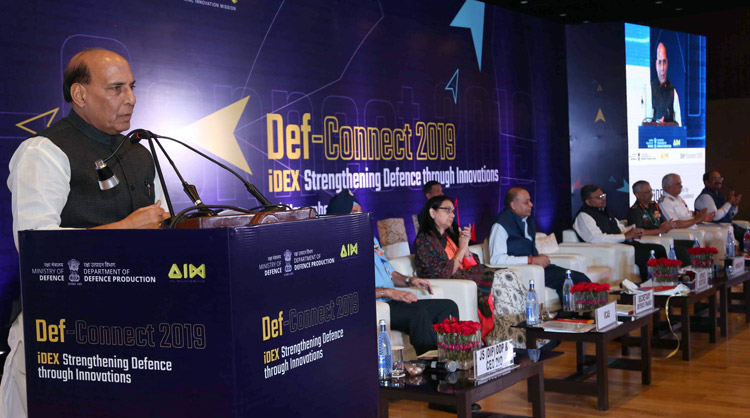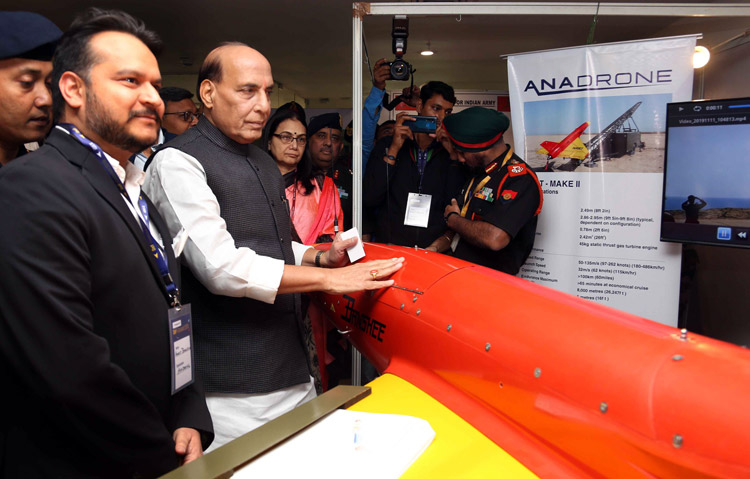INDIAN ARMED FORCES CHIEFS ON OUR RELENTLESS AND FOCUSED PUBLISHING EFFORTS

The insightful articles, inspiring narrations and analytical perspectives presented by the Editorial Team, establish an alluring connect with the reader. My compliments and best wishes to SP Guide Publications.

"Over the past 60 years, the growth of SP Guide Publications has mirrored the rising stature of Indian Navy. Its well-researched and informative magazines on Defence and Aerospace sector have served to shape an educated opinion of our military personnel, policy makers and the public alike. I wish SP's Publication team continued success, fair winds and following seas in all future endeavour!"

Since, its inception in 1964, SP Guide Publications has consistently demonstrated commitment to high-quality journalism in the aerospace and defence sectors, earning a well-deserved reputation as Asia's largest media house in this domain. I wish SP Guide Publications continued success in its pursuit of excellence.
- MoD initiates comprehensive review of Defence Acquisition Procedure 2020, pushes for defence reforms
- G7: The Swansong
- Kalinga Connect: South Asia to Polynesia
- Advanced MRSAM for India for a greater firepower
- Must Credit DRDO for Operation Sindoor, now what is next for defence R&D?
- Operation Sindoor | Day 2 DGMOs Briefing
- Operation Sindoor: Resolute yet Restrained
Boost for Defence Startups
 |
The Author is Former Director General of Information Systems and A Special Forces Veteran, Indian Army |

Speaking at the ‘Defence Connect’ seminar on November 11, 2019, Defence Minister Rajnath Singh said, “Looking at the talent India possesses, I am pretty confident that we can become a $10 trillion economy in the next 10-15 years”. He added that the need of the hour is to strengthen research and development in defence manufacturing. He said India needs to change course from being a net importer to a net exporter of defence technologies in the near future. The good news presently is that the MoD is to earmark at least 500 crore for its Innovations for Defence Excellence (iDEX) initiative and will try to bring together innovators with public and private sector industry and the Armed Forces to find new technology solutions. India plans to fund at least 250 defence startups over the next five years as it seeks new technologies to give a cutting edge to the armed forces.
The plan is to achieve at least 50 ‘tangible innovations’ by the startups that can be inducted over the coming years. Whether these startups will be ‘unofficially’ forced to tie up with public sector undertakings (PSUs) or give free hand to tie up with private sector industry and the Armed Forces will be important. But for improving defence manufacturing and becoming net exporter of defence technologies in the near future instead of being net importer, lot will depend on how the indigenous governmental defence-industrial sector is handled in terms of management, accountability, politicised unions, strikes, work culture, output and patchy successes instead of the required across the board excellence.
Periodic CAG reports point to sub-standard products, exorbitant prices, and inability to meet demands of the Armed Forces, as also rampant corruption which is hardly possible without complicity of DoDP and MoD officials. Ironically, both MoD and DoPD lack defence specialisation. If India is to transform from a net importer in defence to net exporter, there cannot be any shortcut from corporatising the governmental defence industrial sector. The defence industry of the USA, UK and many other foreign countries points towards this because India cannot wield the stick on state-run entities as communist countries like China and Russia do.

Most public is unaware that annual budget of DRDO is some $2.5 billion compared to a little over $3 billion of America’s Defense Advanced Research Projects Agency (DARPA). So why does DARPA accomplish so much and DRDO so little despite guzzling so much money? It has already been brought out in these columns how government plans to corporatise the Ordnance Factory Board (OFB) have/are being resisted during NDA-1 and NDA-2 governments. Government’s decision to turn the OFB into a public sector corporate for increasing exports, self-reliance, and latest technologies and innovations announced in May 2019 appears to have run into rough weather. What financial loss the month long strike by some 60,000 OFB employees against corporatisation incurred but significantly the strike was called by the Confederation of Defence Registered Associations comprising multiple unions, including the BJP-affiliated Bhartiya Pratiraksha Mazdoor Sangh (BPMS), Left Front-affiliated All India Defence Employees' Federation (AIDEF) and Congress-affiliated Indian National Defence Workers' Federation (INDWF). After talks with unions, government was to set up a committee to examine aspects of corporatising OFB and work out modalities. This may mean ‘shelving’ the issue since the TKA Nair Committee (2000) Vijay Kelkar Committee (2004) and the Vice Admiral Raman Puri Committee (2015) all had already recommended corporatiing the OFB.
October 2019 witnessed some 20,000 employees of the state-run Hindustan Aeronautics Limited (HAL), including 10,000 in Bengaluru, go on indefinite strike for revision of their wages since January 2017 till after nine days the Karnataka High Court ordered them to resume work saying, "It is obligatory for the workforce to call off the strike and resume work, failing which (it) would amount to contempt of the court." Again, what was the loss to the state is unknown and ironically our Constitution has little provisions against such strikes causing enormous loss to the country’s economy. Concurrently, governmental focus on the micro, small and medium enterprises (MSMEs) appears to have diminished despite much talk in the media about their importance and future contribution towards India becoming a super power. From the feedback, capacity of MSMEs is underutilised and they are hampered with lack of skilled work force, high costs, corporate tax reduction not applicable to them, lack of requisite infrastructure and erratic power supply etc. Government needs to issue on these issues very seriously.
Most public is unaware that annual budget of DRDO is some $2.5 billion compared to a little over $3 billion of America’s DARPA. So why does DARPA accomplish so much and DRDO so little despite guzzling so much money?





